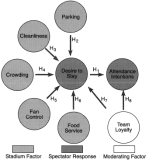
This study employed a sportscape model to analyze environmental impact on spectators’behavior. In addition, the loyalty construct in the sportscape model was reanalyzed based on the theoretical framework. Five hundred questionnaires were distributed to the spectators of World University Taekwondo Championship, and 418 questionnaires were used for data analyses. The analyses of measurement and structural models were conducted using SPSS 18.0 and EQS 6.2 programs. The results indicated that the measurement model showed acceptable reliability and validity. The structural analysis showed that five stadium factors (parking, cleanliness, crowding, food service, and fan control) have significant effects on spectators’ desire to stay and to revisit the stadium. Loyalty also positively affected revisit intention. This study emphasizes sport environment to make spectators revisit and provides future research suggestions to improve the sportscape model.



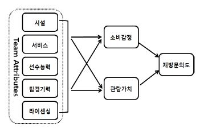
The purpose of this study was to provide managers and owners of Korea professional baseball teams with the necessary information for improving managerial performance by fan acquisition and retention. This paper chose LG, Nexen, and SK fans over the age of 17 as population of this study who visited at least twice home games held in the Jamsil, Mokdong, and Munhak baseball stadium. For the analysis of data, 413 questionnaires were used using SPSS 15.0 Windows and Amos 7.0. To examine respondents demographics traits, frequency analysis was processed and reliability analysis, confirmatory factor analysis and correlation analysis for relationship among the variables were conducted. Also, convergent validity analysis and discriminant validity analysis were made. Finally, path analysis was made for the verification of model suitability and of research hypotheses through structure equation modeling. The research results are as per the below. First, team attributes like physical facilities, team performance and licensing had significantly positive influence on consumption emotion. Second, team attributes like service and team performance significantly positive impact on viewing value. Third, consumption emotion had significantly positive impact on revisit intention. Fourth, viewing value had significantly positive impact on revisit intention.


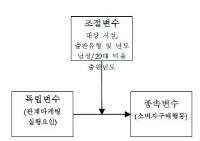
The current study aimed to investigate the impact of relationship marketing on sport consumer behaviors using meta-analytic techniques. Findings from 18 dissertations and 17 journal articles were used to test the relationship marketing and various sport consumer behaviors via the comprehensive meta analysis (CMA) program. Results showed that consumer orientation positively affected purchasing behavior of consumer. On the other hand, sport consumer behavior was not influenced by price. The relationship marketing factors had a most positive effect on, in order of, preference, reliability, and satisfaction. Results didn't find significant moderating evidence for sport facility types, publication types, publication year, the ratio of male and respondents'age.


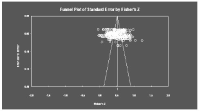


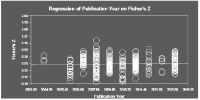

This study aimed to explore the psychological factors affecting sports performance and their purposes as perceived by adolescent athletes. Study data were collected by conducting an open-ended survey with 232 student athletes from adolescent athletes in S city. The collected data were categorized using content analysis, which was conducted twice to explore the psychological factors affecting sports performance and their purposes. From 537 answers, 30 performance-affecting psychological factors—including confidence, endurance, effort/dedication, optimal tension, and social support—were identified, and they were classified into five categories: psychological fundamental, mental toughness, motivation, emotional stability, and social relationships. From 588 answers, the purposes of the psychological factors were identified, including performance achievement, motivation enhancement, demonstrating mental toughness, cognitive strategy, confidence increase, emotional regulation, injury prevention, game strategy, and reinforcement cohesion. These performance-affecting psychological factors and their purposes may serve as a reference to understand how secondary school students perceive the relationships among various psychological factors and the relationship between the psychological factors and performance. This study is expected to inform goal setting and content organization in psychological skills training.

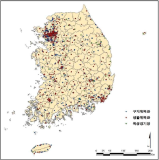
Based on public sports facilities’ census data, this study attempts to empirically analyze to the factors affecting the operating balance and use of public sports facilities(PSF). Analysis was carried out through multiple regression analysis using SPSS and location characteristics analysis using GIS. The total floor area and population was confirmed to influence operating balance and use(DV). Management body influence differed for DV (use and operating balance of PSF) by type of PSF. Consequently, this requires diversification of the management body. The size of facilities and location characteristics(population and zoning) are positive effect on the operating balance and Use of PSF. In order to solve the problem of location restriction and security of marketability, it is possible to take into account the integrated management and sports club’s use of large-scale sports facilities.

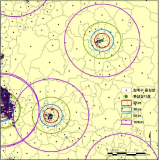
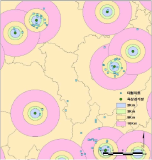
The purpose of the study is to find the impact of social and economic factors in physical activity of children and youth. This study utilized the data from 4th Korean Children and Youth Panel Study(KCYPS), and the analysis were carried out based on the starting sample of 2,009 from ‘the elementary 4 panel’ and 1,978 from the ‘middle school 1 panel’ and 1,984 from the ‘high school 1 panel’, 5,971 full data were used in the final analysis. Data were processed using hierarchical regression analysis and it was statistically validated at the significance level of 0.05. First, Pearson r and Spearman ρ showed that all variables are statistically significant correlations. Second, among the first factors of personal and family characteristics, household income level(B=.113), family composition(B=-.049) and parental education (B=.060) were found on a significant impact on the movement of physical activity time, parental education (B=.027) was found on a significant impact on the subjective evaluation of physical education grades. Third, among the second factors of community-level characteristics, Gini coefficient (B=-.810), wealth concentrating (B=.120) were found on a significant impact on the movement of physical activity time, the Gini coefficient (B=-0.315) was found on a significant impact on the subjective evaluation of physical education grades. Additional factors that determine the coefficient of variation in the level 2 were found to be 0.623 and 0.001 respectively. Therefore, second factors of community-level characteristics are added such as Gini coefficient, wealth concentrating were explained to children and youth exercise time during physical activity 62.3%(p<.01) and subjective evaluation of physical education in grades 0.1%(p<.01). predictive power to
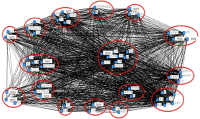
Purpose This study reviewed the seriousness of the Match-fixing through the mixed research methods of the big data analysis (quantitative) and the focus group interview (qualitative) using the keyword, ‘Match-fixing’ and discusses the cautious and comprehensive basic direction for coping with negative issues and preventing recurrence. Methods For the quantitative research method, Naver and Daum were used as the analysis channel and the main keywords selected for the data search were ‘Match-fixing’ and ‘Match-fixing+(measures/eradication/solution)’. The data collection period was limited from January 1, 2010 to December 31, 2016. In addition, for the qualitative research method, 6 homogeneous groups (experience, interest, knowledge) related to the research topic were constructed and interviewed using purposive(intentional) sampling. Results First, five factors (emotion, participant, cause, punishment, countermeasure) were categorized by big data analysis. Second, through Focus Croup interview, additional keywords for three factors (emotion, participant, countermeasure) were derived. Conclusions Therefore, it is required that various preventive measures such as emotional reward for negative emotion, preventive and ethical education, advancement of sports, establishment of Match fixing committee, Expert training are needed.

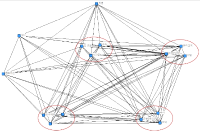

PURPOSE This study aimed to identify and establish ESG activity assessment factors tailored for sports brands, offering a foundational framework for fostering sustainability within the sports industry. METHODS A Delphi survey was conducted between December 1, 2022, and January 31, 2023, involving university professors, sports brand executives, ESG researchers, sports marketing majors , a nd sports brand influencers. Data were analyzed using SPSS WIN 24.0 and MS Excel, encompassing research subject classification, consistency verification, and empirical analysis. RESULTS The assessment of ESG activity evaluation factors of sports brands revealed that governance, social, and environmental dimensions ranked in descending order of relative importance. Among specific evaluation criteria, the adoption of employee ethics regulations was deemed paramount in the governance evaluation area, while support for stakeholder welfare and social well-being took precedence in the social evaluation category. In the environmental sector, the production and delivery of eco-friendly, durable products held the highest significance. Further analysis, considering the weighted priorities of all evaluation factors, emphasized the importance of factors, such as the adoption of employee ethics regulations, support for stakeholder welfare, social well-being, and the production and delivery of eco-friendly, durable products. Conversely, disclosure of company information and issues, support for the underprivileged, and general shareholders' meeting or agenda for the protection of shareholders' rights and interests ranked lower. CONCLUSIONS In summary, this study validates the role of governance (G) aspects within ESG activities for sports brands, alongside environmental and social dimensions. It highlights the importance of a balanced ESG framework, particularly in an era marked by heightened social responsibility awareness among consumers. Prioritizing governance in marketing strategies not only distinguishes sports brands but also necessitates impactful promotion and advertising efforts.
Purpose The purpose of this study was to analyze the research topics of the articles which were published through European Sport Management Quarterly(ESMQ) from 2009 to 2018. The prior topic analysis studies of the ESMQ classified topics based on the key words using NASPE-NASSM SMPS categories. Therefore they couldn't fully reflect the content of the articles. Methods The topic modeling of the current study was conducted with the Latent Dirichlet Allocation(LDA) which generates topics based on the word usage in the article. A total of 265 articles were converted from 'pdf' format to 'txt' ANSI format for topic modeling analysis. The whole topic modeling process was done using R program and the model was set to generate 10 topics from the article. Results The 3 sport management experts were hired to label the name of the topics and the name of the topics are as follow : (1) Impact of mega sport event, (2) Cause-related marketing, (3) Factors affecting the results of the competition, (4) Managing sport organization, (5) European sport leagues, (6) Strategic management, (7) Sport economics, (8) Sport in communities, (9) Sport consumers, (10) Elite sports. It is not quite possible to compare the results of the current topic modeling results with the previous ones because of the methodological differences. However, even though the standards are different, Sport marketing topic showed the largest growth among the 10 topics extracted. Conclusions This study used the LDA probabilistic algorithm to analyze research topics, which made the analyses more objective and wholistic. However, the insights of the researchers were still needed to interpret and labeling the topics.
This study was to identify the structure of anger behavior that athletes illustrated in competitions. In order to achieve research purpose, 167 high school, college, and professional athletes responded to open questionnaires. Targeting 541 players, the structural validity of psychological measurement was verified. As a result of analyzing the sources of anger behaviors during matches, four factors of anger-out, anger-in, anger control, and anger-helplessness were deduced. Afterwards, the validity of 4 factor-model was verified through correlation analysis with trait anger and verification of group differences. That is, the level of trait anger had a positive relationship with expression of anger-out and anger-helplessness while it had a negative relationship with anger-in and anger-control. Especially, the behavioral aspect such as anger-helplessness is a structure that has not been found in other criteria of anger behavior and it reflects the uniqueness of sports situation. Based on such results, the significance of sport anger behavior and implications were discussed.